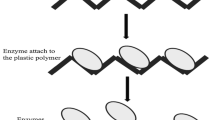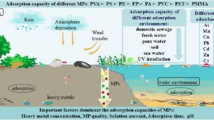Abstract
Objective
Polychlorinated biphenyls (PCBs) are lipophilic and persistent environmental pollutants that are readily absorbed and accumulated in high concentrations in fatty tissues of humans and animals. Invertebrate animals, such as oysters, are vulnerable and sensitive to PCB contamination.
Methods
Previously, our in vitro isothermal studies have shown that acid processed montmorillonites (APM) can effectively bind PCBs and Aroclors. Therefore, in a novel application of this work, a dietary strategy for shellfish was developed using APM, and its parent clay to reduce exposures to PCBs in oysters. PCB residues in oysters with clay treatment at different dietary inclusion rates and durations were measured and compared to a washout treatment.
Results
The efficacy and safety of this strategy were supported by a significant reduction of PCB residues with the inclusion of a low level of APM (0.05%) during a 4-day treatment. Moreover, this sorbent strategy reduced PCB residues in oysters in a dose- and time-dependent manner.
Conclusions
Based on our results, it is possible that clay-based sorbents such as APM, can be included in the diet to significantly reduce exposures to PCBs.



Similar content being viewed by others
References
Clayton GD, Glayton FE (1981) Halogenated cyclic hydrocarbons. In: Clayton G, Clayton F (eds) Patty’s Industrial Hygiene and Toxicology 2B. Wiley, New York, pp 3645–3669
National Technical Information Service (NTIS) (1979) Polychlorinated biphenyls, committee on the assessment of polychlorinated biphenyls in the environment. https://doi.org/10.17226/19865
Urban ER Jr, Kirchman DL (1992) Effect of kaolinite clay on the feeding activity of the eastern oyster Crassostrea virginica (Gmelin). J Exp Mar Biol Ecol 160:47–60
National Oceanic and Atmospheric Administration (NOAA) (2015) Fisheries of the United States. https://oceanconservancy.org/wp-content/uploads/2017/02/FUS2015-1.pdf. Accessed 11 May 2020
Chu FE, Soudant P, Hale RC (2003) Relationship between PCB accumulation and reproductive output in conditioned oysters Crassostrea virginica fed a contaminated algal diet. Aquat Toxicol 65(3):293–307
Jaikanlaya C, Settachan D, Denison MS, Ruchirawat M, Berg MVD (2009) PCBs contamination in seafood species at the Eastern Coast of Thailand. Chemosphere 76(2):239–249
Bjoerk M, Gilek M (1999) Efficiencies of polychlorinated biphenyl assimilation from water and algal food by the blue mussel (Mytilus edulis). Environ Toxicol Chem 18:765–771. https://doi.org/10.1002/etc.5620180424
Thompson S, Budzinski H, Garrigues P, Narbonne JF (1999) Comparison of PCB and DDT distribution between water-column and sediment-dwelling bivalves in Arcachon Bay, France. Mar Pollut Bull 38(8):655–662
Vaezzadeh V, Zakaria MP, Bong CW, Masood N, Magam SM, Alkhadher S (2019) Mangrove oyster (Crassostrea belcheri) as a biomonitor species for bioavailability of polycyclic aromatic hydrocarbons (PAHs) from sediment of the west coast of peninsular malaysia. Polycycl Aromat Comp 39(5):470–485
Wang M, Safe SH, Hearon SE, Phillips TD (2019) Strong adsorption of polychlorinated biphenyls by processed montmorillonite clays: potential applications as toxin enterosorbents during disasters and floods. Environ Pollut 255(1):113210
Phillips TD, Wang M, Elmore SE, Hearon S, Wang JS (2019) NovaSil clay for the protection of humans and animals from aflatoxins and other contaminants. Clay Clay Miner 67(1):99–110. https://doi.org/10.1007/s42860-019-0008-x
Chu FL, Soudant P, Cruz-Rodriguez LA, Hale RC (2000) PCB uptake and accumulation by oysters (Crassostrea virginica) exposed via a contaminated algal diet. Mar Environ Res 50(1–5):217–221
U.S. Environmental Protection Agency (EPA) (1990) Guidance on remedial actions for superfund sites with PCB contamination. https://clu-in.org/download/contaminantfocus/pcb/a-guide-quick-93-55401fs-s.pdf. Accessed 11 May 2020
Landrum PF, Lydy MJ, Lee H (1992) Toxicokinetics in aquatic system: model comparisons and use in hazard assessment. Environ Toxicol Chem 11(12):1709–1725
Mafra LL Jr, Bricelg VM, Ouellette C, Bates SS (2010) Feeding mechanics as the basis for differential uptake of the neurotoxin domoic acid by oysters, Crassostrea virginica, and mussels, Mytilus edulis. Aquat Toxicol 97:160–171
Fisher WS, Oliver LM, Winstead JT, Long ER (2000) A survey of oysters Crassostrea virginica from Tampa Bay, Florida, associations of internal defense measurements with contaminant burdens. Aquat Toxicol 51:115–138
U.S. Environmental Protection Agency (EPA) (2001) Guidelines for bioremediation of marine shorelines and freshwater wetland. https://www.epa.gov/sites/production/files/2013-07/documents/guidelines_for_the_bioremediation_of_marine_shorelines_and_freshwater_wetlands.pdf. Accessed 11 May 2020
Wang M, Orr AA, He S, Dalaijamts C, Chiu WA, Tamamis P, Phillips TD (2019) Montmorillonites can tightly bind glyphosate and paraquat reducing toxin exposures and toxicity. ACS Omega 4(18):17702–17713
Deshpande SA, Yamada R, Mak CM, Hunter B, Obando AS, Hoxha S, Ja WW (2015) Acidc food pH increases palatability and consumption and extends drosophila lifespan. J Nutr 145:2789–2796
U.S. Food & Drug Administration (FDA) Food additive status list. https://www.fda.gov/Food/IngredientsPackagingLabeling/FoodAdditivesIngredients/ucm091048.htm. Accessed 11 May 2020
Marketing authorization for food additives that may be used as pH adjusting agents, acid-reacting materials or water correcting agents. https://www.canada.ca/en/health-canada/services/food-nutrition/food-safety/food-additives/lists-permitted/10-adjusting-agents.html. Accessed 11 May 2020
Vignier J, Rolton A, Soudant P, Chu FLE, Robert R, Volety AK (2019) Interactions between Crassostrea virginica larvae and Deepwater Horizon oil, Toxic effects via dietary exposure. Environ Pollut 246:544–551
U.S. Environmental Protection Agency (EPA) (1981) Environmental impact guidelines for new source canned and preserved seafood processing facilities. https://nepis.epa.gov/Exe/ZyPDF.cgi/9101E6N0.PDF?Dockey=9101E6N0.PDF. Accessed 11 May 2020
Wang M, Hearon SE, Phillips TD (2019) A high capacity bentonite clay for the sorption of aflatoxins. Food Addit Contam Part A 37(2):332–341. https://doi.org/10.1080/19440049.2019.1662493
Wang M, Maki CR, Deng Y, Tian Y, Phillips TD (2017) Development of high capacity enterosorbents for aflatoxin B1 and other hazardous chemicals. Chem Res Toxicol 30(9):1694–1701
Hearon SE, Wang M, Phillips TD (2020) Strong adsorption of dieldrin by parent and processed montmorillonite clays. Environ Toxicol Chem 39(3):517–525
Wang M, Phillips TD (2019) Potential applications of clay-based therapy for the reduction of pesticide exposures in humans and animals. Appl Sci 9(24):5325. https://doi.org/10.3390/app9245325
Wang M, Hearon SE, Phillips TD (2019) Development of enterosorbents that can be added to food and water to reduce toxin exposures during disasters. J Environ Sci Health, Part B 54(6):514–524
Lowe JI, Parrish PR, Patrick JM Jr, Forester J (1972) Effects of the polychlorinated biphenyl Aroclor® 1254 on the American oyster Crassostrea virginica. Mar Biol 17(3):209–214
Trevisan R, Flores-Nunes F, Dolores ES, Mattos JJ, Piazza CE, Sasaki ST, Taniguchi S, Montone RC, Bicego MC, Dos Reis IMM, Zacchi FL, Othero BNM, Bastolla CLV, Mello DF, Graga APM, Wendt N, Toledo-Silva G, Razzera G, Dafre AL, Melo CMR, Bianchii A, Marques MRF, Bainy ACD (2017) Thiol oxidation of hemolymph proteins in oysters Crassostrea brasiliana as markers of oxidative damage induced by urban sewage exposure. Environ Toxicol Chem 36(7):1833–1845
Zacchi FL, Flores-Nunes F, Mattos JJ, Lima D, Luchmann KH, Sasaki ST, Bicego MC, Taniguchi S, Montone RC, Almeida EA, Bainy AC (2018) Biochemical and molecular responses in oysters Crassostrea brasiliana collected from estuarine aquaculture areas in Southern Brazil. Mar Pollut Bull 135:110–118
Moukas AI, Thomaidis NS, Calokerinos AC (2014) Determination of polychlorinated biphenyls by liquid chromatography-atmospheric pressure photoionization-mass spectrometry. J Mass Spectrom 49(11):1096–1107
Acknowledgements
This work was supported by the Superfund Hazardous Substance Research and Training Program (National Institutes of Health) (P42 ES0277704); and the United States Department of Agriculture (Hatch 6215).
Author information
Authors and Affiliations
Corresponding author
Ethics declarations
Conflict of interest
Meichen Wang and Timothy Phillips declare that they have no conflicts of interest.
Ethical approval
This article does not contain any studies with human participants or animals performed by any of the authors.
Rights and permissions
About this article
Cite this article
Wang, M., Phillips, T.D. Edible clay inclusion in the diet of oysters can reduce tissue residues of polychlorinated biphenyls. Toxicol. Environ. Health Sci. 12, 355–361 (2020). https://doi.org/10.1007/s13530-020-00058-2
Accepted:
Published:
Issue Date:
DOI: https://doi.org/10.1007/s13530-020-00058-2




